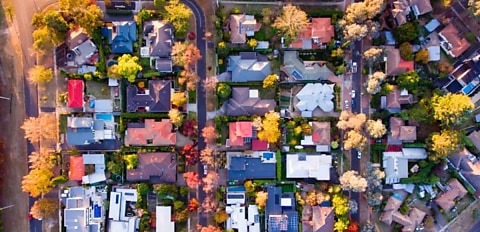The value of the Australian residential housing market rebounded to over $10 trillion at the end of August, but the outlook remains “highly uncertain”, according to property data and services provider CoreLogic.
The rise marks the first time since the value of housing stock has topped the double-digit mark since June 2022 (when Australia was experiencing a boom in home buying).
It comes following a national recovery in home values, which began in March 2023.
According to CoreLogic, house prices increased by 4.9 per cent between March and the end of August – regaining about half of the ground lost between April 2022 and February 2023, when national home values fell 9.1 per cent, peak to trough.
As such, home values are now down by just 4.6 per cent from the peak set in April 2022.
However, they are still down 1.1 per cent on the past 12-month period.
Dwelling values in Brisbane have been growing strongly, with values growing by 4.2 per cent in the three months to August (despite its overall dwelling values having decreased by 3 per cent over the past year).
Sydney had the second-strongest dwelling value result over the past quarter, with a 3.8 per cent increase, as values grew 1.2 per cent over the year. They are now 6.2 per cent below the record high from January 2022.
CoreLogic also revealed both Adelaide and Perth continued to buck the trend as dwelling values were at a record high at the end of August, having increased 3.4 per cent and 2.9 per cent, respectively, over the past quarter and 2.2 per cent and 4.5 per cent over the past year.
Conversely, the smaller capital cities – Hobart, Darwin, and Canberra – faced a further decrease in dwelling values over the past year, dropping 10 per cent, 1.3 per cent, and 5.9 per cent, respectively.
They are now below their record-high dwelling values by 13 per cent in Hobart, 11.2 per cent in Darwin, and 8.6 per cent in Canberra.
Uncertain outlook for value growth moving forward
Noting the milestone, Eliza Owen, head of residential research, Australia at CoreLogic, said that the $10 trillion figure resulted from a combination of higher values (the median home value in Australia was $732,886 at the end of August, according to CoreLogic) and the stock of housing increasing to around 11 million properties.
However, she added that house prices were “likely to flatten out towards the end of the year” and suggested the market still had a shaky nature despite the growing expectation that the Reserve Bank of Australia (RBA) board had finished hiking the cash rate.
Ms Owen said that, despite the consecutive rate pauses, borrowing capacity remained “constrained by a relatively high serviceability buffer”.
She commented: “APRA (Australian Prudential Regulation Authority) data to June showed the weighted average home loan assessment rate was just below 9 per cent, and ABS housing lending data shows mortgage lending has fallen for three of the past four months.
“Economic performance is also set to unwind, and while this is good news for the inflation and cash rate trajectory, a rise in unemployment may create a higher degree of risk for mortgage serviceability.
“CoreLogic is expecting some heat could come out of the recent recovery trend toward the end of this year, while a more robust recovery in housing values will be limited until credit conditions loosen.”
CoreLogic flagged the value of home lending had dropped over three of the past four months due to “weaker owner-occupier lending”.
In July, the value of owner-occupier lending declined by 1.9 per cent, while investor lending fell by just 0.1 per cent.
[Related: Housing affordability at 30-year low: PropTrack]

